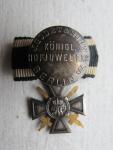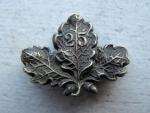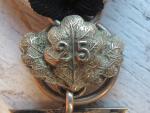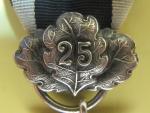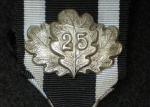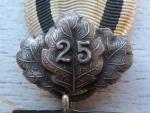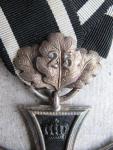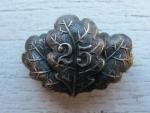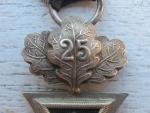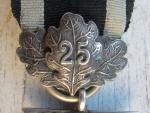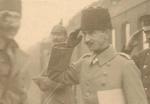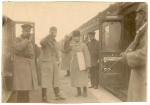-
Posts
282 -
Joined
-
Last visited
Content Type
Profiles
Forums
Blogs
Gallery
Events
Store
Everything posted by Streptile
-

EK 1914 I feel like engraving some EK1s......
Streptile replied to Chris Boonzaier's topic in Germany: All Eras: The Iron Cross
Great idea. I see these accession numbers on all the artifacts at the Museum of Natural History and also at the Met here in NYC -- even on super valuable gold Egyptian necklaces and such. -

EK 1914 Help with 1914 EK2 Market "J" on the ring -Juncker?
Streptile replied to Graf's topic in Germany: All Eras: The Iron Cross
This is a well-known indecipherable mystery mark. I doubt it's Juncker, but who knows? -
Hi Paul, Good question. The main differences are: quality, materials and that special mystique that attends "awarded pieces." Wartime examples are of extremely high quality, made of gold or silver with exquisite workmanship. They belonged to, or could have belonged to, someone who wore them during the war. Only two makers are thought to have made wartime award-type PLMs, and these are the most highly regarded types. The postwar copies are also very nice, but the quality is quite poor, they were never awarded to anyone, and they were never worn in war. They are bronze gilt or silver. The overall design is substantially the same, but the actual dies are different and no one would mistake a postwar copy with the real, wartime artifact. Overall though, I think the biggest factor contributing to the high prices of pre-1918 examples is the fact that they were awarded or worn during the war.
-
Finally, another one that I believe to be an early period variant with acorns. I have a copy of a letter from the War Ministry office dated 29 August 1895 indicating that there was a problem with manufacturers making oakleaves after they were authorized, but before a final design had been accepted. This resulted in some oakleaves being made "contrary to regulations." I assume that these variant types (this one, and the one that looks like a Zähringer Lion oakleaf, which you have labeled "Variante 16," among others) are exactly what this letter referred to. Thus I think it's a fascinating piece. Here is a translation of the relevant letter: I am curious to know your thoughts on this piece. I have seen four such examples.
-
Hi Tilo, I am following your (long overdue!) thread on SDA with great interest but the language barrier makes it hard for me to comment articulately. I'm happy you've begun a companion thread here, and I will add some comments and photos. First let me say that I am quite sure your "variant 5" is a fake. I wrote this over there too. There are indeed some original 1895 oakleaf clusters with sans-serif numerals (for example, your "variant 6"). But this variant 5 is almost always encountered on fake (Ninth Bead) EK2s with fake (crown/moon) 1914 WHS, or otherwise on quite obviously faked bars. I myself have never seen this variant 5 type on any bar that looked legitimate to me. If you would like some examples of this oakleaf on Ninth Bead fake sets, just ask and I will try to find some. Following this post I will add some photos of pieces from my collection. You may add them to your thread if you wish.
-
I don't know who made it or exactly when, but it's a fake or a copy. They're made in the same style in many different classes and grades (swords, swords on ring, with RAO Band, etc etc). The design of the central medallion is not correct (this is the most easily recognizeable problem), the quality is not there, the design of the swords is not correct, and the markings (for Wagner sv here, I think) are spurious. No serious dealer or auctioneer sells these as originals, although they are routinely sold as "post-1918 copies," which is a neat euphemism for a fake in almost all cases. Very reputable sellers (Straube, Bretzendorfer) sell them as "collector's copies." That said, it's a very nicely made piece and they do bring some money as collector's pieces, especially in the higher grades (with RAO Band, e.g.).



